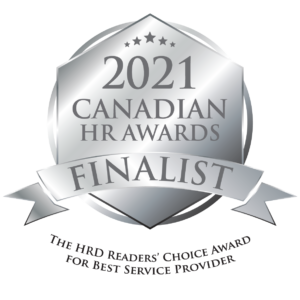For any organization, employees are a valuable asset and a key to success; therefore, they must be managed properly. Having proper HR policies in place will not only ensure that the needs of every employee are being met but also help in your business’ success by increasing employee satisfaction. As the world is changing at a rapid pace, organizations are also changing the way they do things and are modernizing their workplace, so the HR policies must be aligned with these changes.
Human resource policies are the guidelines or rules that are put in place by an organization to recruit, train, evaluate, and reward their employees. These policies can also help to avoid any misunderstandings between the employee and the employer regarding their rights and responsibilities at the workplace.
Some important HR Policies and Planning that your company must have in place in order to enhance employee engagement and flourish your business are listed below.
Important Human Resource Policies
Employment Classifications Policy
It is considered a best practice to clearly describe classifications of the employee at the time of hiring, such as full-time, part-time, exempt, or non-exempt. This helps in defining employees’ rights clearly and their qualification for benefits and overtime pay. Proper classification of employees will foster good ties between employers and their employees and help businesses abide by labor laws. It also allows employers to pay employees according to the duties, responsibilities, and complexity of their roles.
Conduct and attendance policies
It is a legal document that states how employees should act on a day to day basis and contains a series of correct actions that need to be practiced by the employees. The company’s core values, daily operations, and culture are also reflected in it. All of this gives a clear idea to employees about how they should behave with their peers, supervisors, and overall organization. This section also contains policies regarding alcohol, drug substance abuse, smoking, harassment (sexual harassment), non-discrimination, and workplace violence.
Policies regarding when the employees should reach the workplace each day and procedures about how to inform the organization about scheduled or unscheduled leaves and late arrivals are also included in this section.
Health and Safety policies
Safety policies ensure that the employees work in a safe environment, and the culture of the organization is suitable for everyone. These policies also benefit the company in terms of property or data loss and liabilities, for example, door locking rules and the use of passwords. Health and safety policies in the workplace minimize employee illnesses and injuries greatly. It also describes the procedures that employees have to follow to report any work-related injuries. HR should also ensure that the policies in this section are in compliance with the OSH Act (Occupational Safety and Health Act) to avoid workplace hazards such as having a communication program in place if certain chemicals are present at the site.
Selection policy
Recruitment or hiring of the appropriate person also requires a comprehensive HR policy. Choosing the appropriate person for a specific job at the right time is most important for an organization. In addition to this, employment criteria, type of employment, employment contracts, new employees’ orientation, payroll and payment method, layoff, retirement plans, and job descriptions are all included in this domain. Equal opportunity and non-discrimination policies are also devised in this process.
Training and Development policies
Training and development program provides an opportunity to strengthen those skills that each employee needs to polish, bringing all employees to a higher level. Training also lessens any weak links. This policy provides guidelines for assigning resources from the department, such as trainers, money, and time. The policy also gives a clear direction to training activities and highlights the authority granted to the training department as well as the limitations of that authority.
The key purpose of this policy is to encourage personal and professional growth, helping individuals and organizations to reach their full potential at work. Any activity that leads to the advancement of their knowledge, abilities, competence, and working practices is included in training and development.
Compensation and Benefits policies
Compensation and benefits refer to benefits that the employees receive from the company in return for their work. It comprises of incentives to motivate the employees, job evaluation systems, feedback survey or employee feedback system, monetary and non-monetary reward system, and overtime rules.
There are several compensation elements used by each company, and they have to be described clearly. A well-placed compensation and benefits policy brings out their best at the workplace and helps in retaining them. It includes salary, bonuses, health-care plans, and several other types of compensation.
Whistleblowing policy
This HR policy plays a vital role in eradicating corruption from the organization. It is a confidential disclosure by an individual, or group of people, of any concern encountered in the workplace relating to unlawful activity.
The purpose of this policy is to facilitate staff and others who have grave reservations about any aspect of the work to come forward and express such concerns. This policy helps the organization to eradicate corruption and encourage its employees to voluntarily come up and indicate the unlawful activities taking place in the organization. The name of the volunteer who reports the problem is generally kept secret while the strict action is taken against the culprit.
Privacy Policy
It is the type of policy that bounds both employer and employee to prevent and protect the organization’s sensitive data from leaking out. It is the obligation of the worker to keep its organization’s confidentiality and not allow the data to leak out. Similarly, it is the responsibility of an organization to keep the data of its clients secure. Implementing this HR policy is very important to maintain the integrity of the organization, its employees, and its customers. This policy mainly covers the data protection of employees, and clients of an organization. This policy also states how personal data should be collected and further explains the importance of its safety.
Disciplinary and termination policies
One of the important functions of HR policy is to ensure that all employees are treated fairly. A disciplinary policy defines standard protocols for employees regarding specific incidents and also help them to correct their actions. It also includes the consequences if an employee is unable to amend their behavior.
When an employee violates the company’s policies, or if they are found involved in any illegal activity, it could lead to termination. If you have a proper HR policy in place, the termination process would be smooth. The policy clearly states the procedures for voluntary and involuntary termination and also helps the current employees to understand what they should expect.
Conclusion
Much like communities need laws to maintain order and common understandings, good and efficient HR policies are required for all companies. HR problems will eventually occur regardless of the size, location, or industry of your organization and cause you to dissipate time and energy away from other business operations in order to resolve them. Having a strong set of HR procedures in place will help minimize this burden, consistently set performance and development goals, and carve out a disciplinary pattern for the success of the organization.
Many organizations are unable to utilize their workforce to its full potential because of inconsistent policies, that is why HR consultancy is important. Peak Performance is an HR Company in Toronto that has vast experience in providing consulting services to established organizations in the market.

